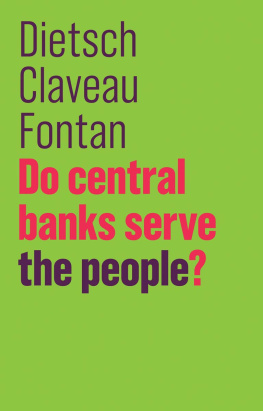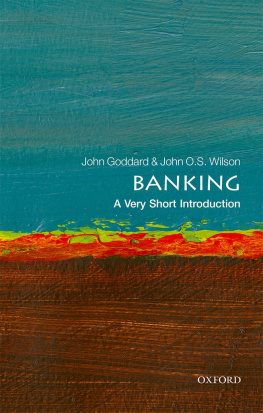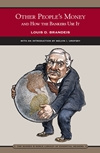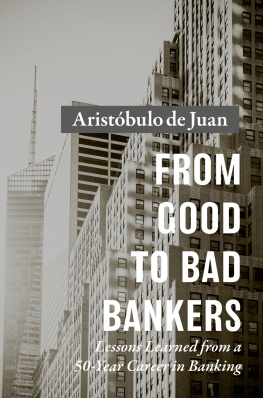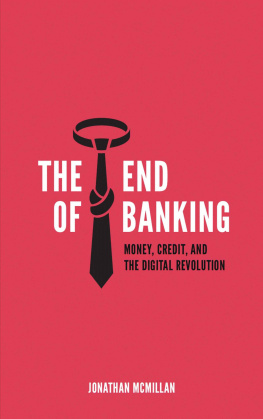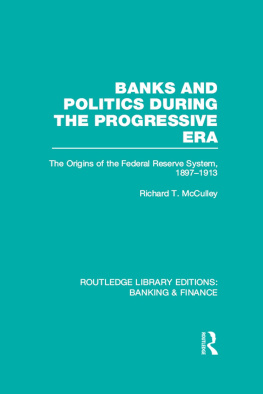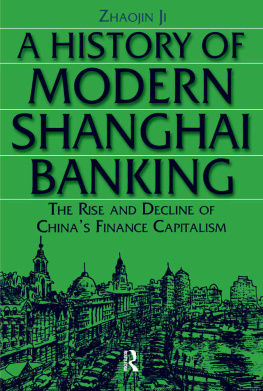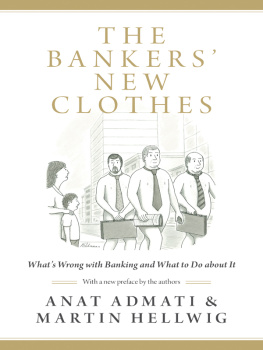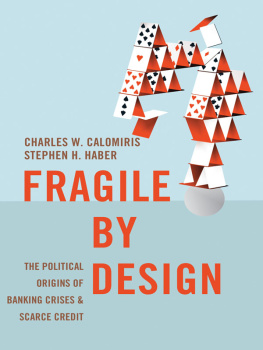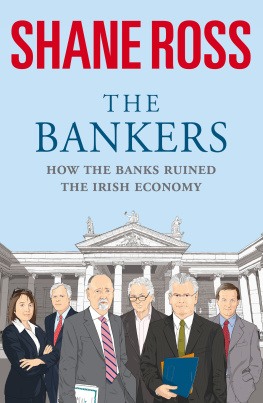THE BANKERS NEW CLOTHES

Copyright 2013 by Princeton University Press
Published by Princeton University Press, 41 William Street, Princeton, New Jersey 08540
In the United Kingdom: Princeton University Press, 6 Oxford Street,
Woodstock, Oxfordshire OX20 1TW
press.princeton.edu
Jacket illustration by Rich Feldman
All Rights Reserved
Library of Congress Cataloging-in-Publication Data
Admati, Anat R.
The bankers new clothes : whats wrong with banking and what to do about it / Anat Admati and Martin Hellwig.
p. cm.
Includes bibliographical references and index.
ISBN 978-0-691-15684-2 (hbk. : alk. paper)
1. Banks and banking. 2. Financial institutionsGovernment policy. 3. Financial crisesPrevention. I. Hellwig, Martin F. II. Title.
HG1586.A23 2013
332.1dc23
2012039277
British Library Cataloging-in-Publication Data is available
This book has been composed in Minion Pro with DIN display by Princeton Editorial Associates Inc., Scottsdale, Arizona.
Printed on acid-free paper.
Printed in the United States of America
10 9 8 7 6 5 4 3 2 1
For our families
CONTENTS
PREFACE
I N THE FALL OF 2008, it seemed obvious that radical reform would be needed. For more than a year, banks and financial markets had been in a state of crisis. Then, in September, the entire financial system was about to collapse. One institution after another was failing or about to fail. Governments and central banks stopped the panic by massive interventions, but even so, the economy went into a decline of a magnitude unseen since the Great Depression.
We hoped for a serious investigation and discussion of what had gone wrong and what would have to be done to avoid a recurrence of such a crisis. We hoped that the lessons of the crisis would be learned. But we were disappointed. There was no serious analysis of how the financial system might be made safer.
Many claimed that they knew what had caused the crisis and what neededor did not needto be done, and they did not look any further. Bankers and their supporters argued that not much was wrong with the banking system. Serious reform, they routinely said, would interfere with what banks do and harm the economy. If we wanted banks to lend and to support growth, they wanted us to believe, we had to accept this system pretty much the way it was.
This made no sense to us. Much of the discussion seemed to ignore what had happened. Many arguments seemed downright false. As academics who have spent our lives studying the financial systemAnat as a finance and economics professor at Stanford and Martin as an economics professor and director of a research institute in Bonnwe were shocked to see press reports and policy recommendations with misleading uses of words, flawed understanding of basic principles, fallacious and misleading arguments, and inadequate uses of mathematical models. Banking experts, including many academics, seemed to believe that banks are so different from all other businesses that the basic principles of economics and finance do not apply to them.
We were not surprised that bankers lobbied in their own interest and said whatever might serve their needs; often their paychecks and bonuses were at stake, and the status quo worked for them. But we were dismayedand increasingly alarmedto see that flawed narratives and invalid arguments were not challenged but instead seemed to be winning the debate on both sides of the Atlantic. Reform efforts seemed to be stalling. Proposals were headed in the wrong direction. Simple opportunities to improve the system were being overlooked.
We wrote about the issues, arguing for reform and exposing the invalid arguments that were being given against reform. However, important parts of the policy discussion go on behind closed doors. Even when regulators ask for public comment on a proposed regulation, most contributions come from the industry and its supporters, and additional lobbying goes on behind the scenes.
In trying to have discussions with those involved in the debate, we discovered that many of them had no interest in engaging on the issuesnot because of what they knew or did not know but because of what they wanted to know. Politicians, regulators, and others often prefer to avoid challenging the banking industry. People like convenient narratives, particularly if those narratives disguise their own responsibility for failed policies. Academics get caught up in theories based on the belief that what we see must be efficient. In such a situation, invalid arguments can win the policy debate.
We also discovered that many people, including many who are involved in the policy discussion, do not have a sufficiently full understanding of the underlying concepts to form their own opinions about the issues or to evaluate what others are saying. The jargon of bankers and banking experts is deliberately impenetrable. This impenetrability helps them confuse policymakers and the public, and it muddles the debate.
We are concerned about this situation because the financial system is dangerous and distorted. We have written this book to explain the issues to the broader public. We want more people to be better informed so they can form their own opinions. We want to expand the set of participants and elevate the level of the debate.
When policymakers ignore risks, all of us may suffer in the end. A stark example was provided in Japan, where corrupted regulators and politicians colluded for years with the Tokyo Electric Power Company and ignored known safety concerns. When an earthquake and a tsunami occurred in 2011, this neglect led to a nuclear disaster that was entirely preventable.
Weak regulations and ineffective enforcement were similarly instrumental in the buildup of risks in the financial system that turned the U.S. housing decline into a financial tsunami. Yet, despite the wreckage, serious attempts to reform banking regulation have foundered, scuttled by lobbying and misdirection.
Banking is not difficult to understand. Most of the issues are quite straightforward. Simply learning the precise meanings of some of the terms that are used, such as the word capital, can help uncover some of the nonsense. You do not need any background in economics, finance, or quantitative fields to read and understand this book.
In this book we discuss many statements and views. At times we use generic terms, attributing statements to bankers, regulators, or politicians. Having talked and collaborated with many people connected to banking and public policy, we know that not every banker, regulator, or politician subscribes to the same views. Many in these groups and elsewhere advocate and work to bring about beneficial reform. In each of the groups, however, the views we discuss are so prevalent, and have had such an impact on policy discussions, that we feel justified in generalizing to make our points.
Do not believe those who tell you that things are better now than they had been prior to the financial crisis of 20072009 and that we have a safer system that is getting even better as reforms are put in place. Todays banking system, even with proposed reforms, is as dangerous and fragile as the system that brought us the recent crisis.
But this situation can change. With the right focus and a proper diagnosis of the problems, highly beneficial steps can be taken immediately.
Having a better financial system requires effective regulation and enforcement. Most essentially, it requires the political will to put the appropriate measures in place and implement them. Our hope in writing this book is that if more people understand the issues, politicians and regulators will be more accountable to the public. Flawed and dangerous narrativesthe bankers new clothesmust not win.
Next page



